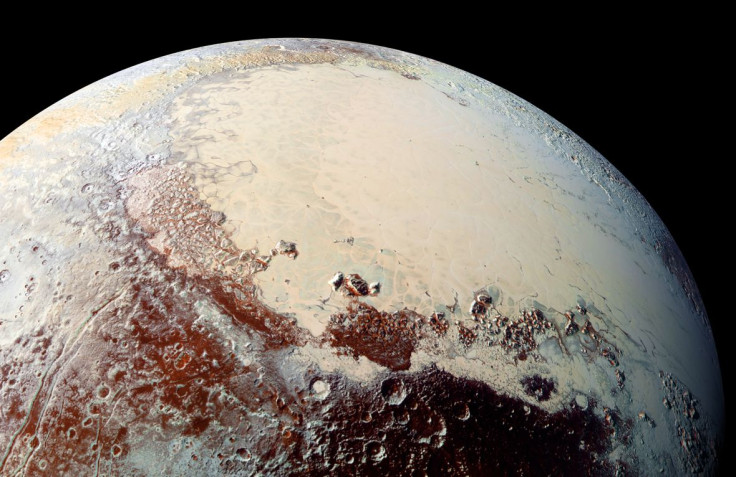Pluto Shocking Discovery: New Findings Suggest Dwarf Planet Could Have Hosted Life

Pluto is not one of the planets that would come to mind when talking about worlds that could harbor life outside Earth, but a new study may suggest that the dwarf planet shouldn't be excluded from mankind's search.
In a study published this week in the journal Science Advances, researchers suggested that Pluto may have experienced recent geological activity due to the presence of ammonia found in its reddish ice. This activity, according to their paper, may have been volcanic, but instead of molten lava like here on Earth, liquid water was what spewed out of the dwarf planet's formations.
The authors studied the observations made by NASA's New Horizons probe when it zipped past the icy world back in 2015. In certain areas of Pluto that were believed to have experienced tectonic activity, they found evidence of ammonia, which is considered to be the "holy grail of planetary science," according to Cristina Dalle Ore, a planetary scientist at NASA's Ames Research Center in Moffett Field, California.
Dalle Ore, who is the study's lead author, explained in a statement to Space.com that ammonia is found in chemical reactions involving lifeforms so it is considered to be a good sign of an "environment that is conducive to life." While scientists have not exactly found aliens on Pluto, the presence of ammonia apparently indicates that they are looking in the right place if they want to search for life.
"[Ammonia] is a fragile molecule and gets destroyed by ultraviolet irradiation as well as cosmic rays," Dalle Ore said. "Therefore, when found on a surface, it implies that it had been emplaced there relatively recently, some million years before [being found]."
Previous studies suggested that Pluto harbors an ocean of liquid water beneath its surface. According to the new research, ammonia had already been present in the underground body of water and found its way to the surface by seeping through cracks or vents and being spewed out in a process called cryovolcanism.
Dalle Ore and her colleagues hope to find more concrete evidence of the size of the liquid water flowing underneath Pluto's surface, which remains uncertain to date.
Meanwhile, another study that was based on New Horizons' data revealed that the hundreds of dunes on Pluto's planet were actually composed of methane "sand." The research, which was published in the journal Science last year, suggested that winds blew methane sand from mountains towards the western half of Pluto's Sputnik Planitia, creating regularly spaced ridges.
© Copyright IBTimes 2025. All rights reserved.





















